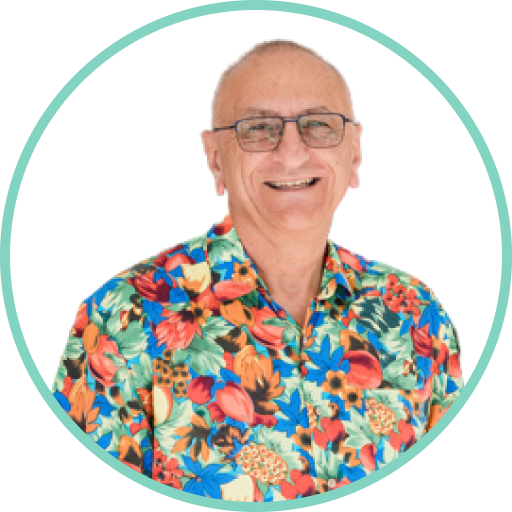Trauma leaves a lasting imprint—not just in the mind but deep within the body. For many patients struggling with Post Traumatic Stress Disorder or PTSD, the effects of trauma go beyond emotional distress. Their nervous system is caught in a loop of hypervigilance, their body holds onto tension, and their sleep is disrupted by persistent restlessness or nightmares.
Unfortunately, PTSD is more common than we might think. According to a survey conducted by the World Health Organization, about 70% of people worldwide will experience a potentially traumatic event in their lifetime. However, another survey also found that only 5.6% of those individuals will go on to develop PTSD. Even so, that same survey mentioned that an estimated 3.9% of the global population has experienced PTSD at some point, reinforcing just how widespread its impact can be—even if it’s not always openly discussed.
As an acupuncturist specialising in mental health, you’ve likely seen firsthand how acupuncture can help patients find relief from anxiety and depression. But PTSD brings another layer of complexity. It’s not just about regulating mood or calming the mind but addressing the way trauma reshapes the nervous system and every aspect of a person’s well-being.
The beauty of Transformational Acupuncture (discover what makes it unique here) is that it doesn’t just mask symptoms—it works with the body to restore balance. And when it comes to acupuncture for PTSD, this ability to regulate, reset, and reconnect is incredibly powerful.
However, working with PTSD needs more than choosing the right acupuncture points. It requires an understanding of how trauma affects the nervous system, how to create a safe and supportive healing environment (which we also mentioned in this blog), and how to integrate other strategies that enhance recovery. In this blog, we’ll explore ways to refine your approach and deepen your impact when working with trauma survivors—so you can help your patients with their PTSD recovery.
Understanding PTSD Through an Acupuncturist’s Perspective
Known as a psychological condition, PTSD is an ongoing state of imbalance that disrupts a person’s entire system. As acupuncturists, we already recognise how emotions, the nervous system, and physical health are deeply interconnected. We see how anxiety manifests in the body, how depression stagnates energy, and how stress depletes the system over time. PTSD follows a similar pattern but with unique complexities that require us to look beyond our standard mental health protocols.
From a Western medical standpoint, PTSD is characterised by an overactive amygdala (the brain’s fear centre), a dysregulated autonomic nervous system, and a body that remains in a constant state of high alert. Patients may experience emotional numbness, intrusive thoughts, hypervigilance, or an inability to fully relax—even when they’re safe. The nervous system is no longer responding appropriately to its environment, caught in a loop of past trauma.

In Traditional Chinese Medicine (TCM), we can view PTSD as a profound disturbance of Shen (spirit) and Qi (vital energy). Trauma causes stagnation, depletion, and imbalance in the system, often leading to:
- Qi and Blood stagnation – emotional suppression, muscular tension, and digestive issues.
- Liver Qi constraint – irritability, anger, frustration, restlessness.
- Heart and Kidney disharmony – fear, anxiety, panic, disturbed sleep.
- Shen disturbance – difficulty processing emotions, feeling disconnected from the self.
However, for trauma survivors to achieve complete healing, they need to rebuild their sense of safety and reconnection within the body.
To truly support long-term recovery, acupuncture treatments need to go beyond addressing anxiety and depression. Rather, a deeper understanding of how PTSD affects both the nervous system and the body’s energetic flow.
That said, let’s dive into how you can integrate trauma-informed strategies with your acupuncture expertise.
Acupuncture’s Role in PTSD Recovery
As mentioned, trauma changes how the nervous system functions by keeping the body in a persistent state of tension and reactivity. So, to break that cycle, we need to look beyond the usual patterns we see in anxiety and depression.
One important thing to note is that trauma is rooted in a negative experience that lingers in the body, shaping how it responds to stress, emotions, and even everyday interactions. As a result, the body remains on high alert to keep the person safe long after the event has happened. And when the nervous system stays on high alert, it can feel like there’s no off switch, making relaxation, sleep, and even a sense of safety feel out of reach.
That’s why breaking this cycle requires more than addressing surface-level symptoms like anxiety or low mood. Instead of forcing the body to “move on” or suppress responses, we need to explore gentle approaches that work with the nervous system, not against it.
The body needs to unlearn survival mode and rediscover a state of calm – something acupuncture can truly deliver. Only when the person feels safe can it begin to process and release trauma – allowing for true healing to take place.
Let’s talk more about that by breaking down how it works at different levels for trauma survivors:
- Regulating the Nervous System – PTSD often keeps patients stuck in a loop of fight-or-flight activation. The good thing about acupuncture is that it gradually eases the body out of that activated state by supporting the parasympathetic nervous system without overwhelming or re-traumatising the person.
- Supporting Emotional Processing – Many patients with PTSD feel disconnected from their emotions or trapped in cycles of fear, grief, or anger. Acupuncture helps move stagnation and create space for these emotions to be processed in a more balanced way.
- Addressing Physical Manifestations of Trauma – Trauma isn’t solely confined to memories or emotions—it embeds itself in the body. That’s why many PTSD patients struggle with chronic pain, digestive issues, muscle tension, and sleep disturbances, as their nervous system remains in a prolonged state of dysregulation.
Acupuncture helps release these stored imbalances, easing tension, regulating digestion, and promoting restful sleep (read our blog here to learn more about how acupuncture helps improve sleep!). With consistent treatment, patients often regain a sense of ease in their bodies—one that carries into their daily lives.
- Enhancing Overall Well-Being – For many patients, PTSD creates a sense of disconnection—from themselves, from others, from life. Acupuncture treatments can help restore that lost connection, creating a sense of groundedness, presence, and resilience.
Integrating Trauma-Informed Strategies in Acupuncture Practice

While these benefits are well-established, working with trauma requires a slightly different approach than standard mental health treatments. Point selection is important, but the overall treatment experience plays an even bigger role.
Patients need an environment that fosters safety, support, and deep restoration—one that allows their nervous system to gradually shift out of a hyperactive state and into a place where true healing can take place.
That’s why acupuncturists need to be cautious yet intentional when integrating trauma-informed strategies. Here are a few key approaches to consider:
Creating a Safe and Grounded Healing Environment
Patients with PTSD often have a heightened sensitivity to their surroundings, making safety and trust essential. Small adjustments in your practice can make a significant difference:
- Recognise trauma responses. Some patients may struggle with dissociation, hypervigilance, or difficulty relaxing on the table. Slowing down and maintaining a calm, steady presence can help regulate their nervous system.
- Use intentional needling techniques. Gentle, slow insertions help avoid overstimulation, especially in patients who startle easily or feel discomfort with body awareness.
- Offer grounding techniques. Before and after treatment, guiding patients in simple breathwork or body-awareness exercises can help them stay present and integrated.
Introducing Complementary Strategies to Support PTSD Recovery
Acupuncture is a powerful tool, but trauma recovery often benefits from a multi-faceted approach. While you can’t dictate what patients should do outside of treatment, you can introduce them to additional strategies that may help regulate their nervous system between sessions. Encouraging patients to explore practices that complement acupuncture can deepen their healing process over time.
- Breathwork and somatic techniques. Suggesting simple breathwork exercises or gentle movement practices can reinforce the calming effects of acupuncture and help patients self-regulate when distress arises.
- Mindfulness and movement practices. Introducing the idea of qigong, tai chi, or restorative yoga can give patients additional tools to reconnect with their bodies in a safe and supportive way.
- Herbal and dietary support. Discussing how certain herbal formulas or dietary adjustments might help stabilise emotions and restore balance can be valuable, particularly for patients experiencing Qi depletion or Shen disturbance.
Offering these suggestions in a way that respects the patient’s autonomy allows them to consider new approaches at their own pace while reinforcing the work you’re already doing in treatment.
Encouraging Collaborative Care for PTSD Recovery
Trauma recovery is often most effective when approached from multiple angles. While acupuncture provides essential nervous system regulation and physical support, many PTSD patients benefit from working with other trauma-informed specialists as well.
If a patient is already seeing a psychotherapist, somatic therapist, or another healthcare provider, you might consider reaching out (here’s a guide on how to befriend your patient’s GP)—with their consent—to create a more integrated support system. Collaborative care (as we discussed on our blog that talks about integrating both Western medical practices with Eastern treatment traditions) can enhance treatment outcomes and ensure that all aspects of the patient’s healing journey are being addressed.
For patients who aren’t currently working with other specialists, you can gently introduce the idea that additional support may be helpful. Encouraging them to explore therapy, bodywork, or movement-based healing practices—without pressure—can empower them to take steps toward deeper recovery when they feel ready.
- Psychotherapists and somatic therapists. If a patient is open to it, therapy modalities like EMDR, somatic experiencing, or cognitive behavioural therapy (CBT) can complement acupuncture by helping them process trauma on a deeper level.
- Bodyworkers and movement specialists. Suggesting practices like craniosacral therapy, massage, or trauma-informed movement therapy can provide additional ways for patients to release stored tension and reconnect with their bodies.
Expanding the Role of Acupuncture in Trauma Recovery

PTSD challenges every level of a person’s well-being—mind, body, and nervous system. While we, as acupuncturists, are already well-versed in treating anxiety and depression, we should remember that working with trauma requires an expanded perspective.
The journey to PTSD recovery is rarely quick or straightforward, as trauma recovery takes time, and every patient’s healing process unfolds at its own pace. Some may make progress quickly, while others may need months or even years to feel significant change.
As acupuncturists (find a Certified Transformational Acupuncturist near you), our role is to remain patient, present, and open—holding space for our patients as they navigate the long road ahead. Only then can true healing take place—not by rushing the process, but by allowing each individual to move forward in their own time, with the support and care they need.
Trauma recovery means rebuilding trust in the body, restoring balance, and creating a sense of safety that lasts. And through our work on using acupuncture for PTSD, we have the privilege of being a steady presence in that journey, helping patients take one step closer to feeling whole again.
Want to learn more about Transformational Acupuncture? Visit our website for more details.




